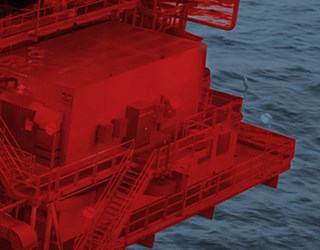NEWS Assessing Composite Centralizers Against Solid Steel Alternatives
Most cementing and drilling engineers are in no doubt that centralizers are vital components that ensure proper casing placement and cement coverage; safeguarding well integrity and operational success. However, the choice between centralizer types—whether composite, solid steel, or bow spring—remains a subject of debate within the industry. While each type offers distinct advantages and limitations, concerns have been raised regarding the performance of composite centralizers compared to their solid steel counterparts. In this article we delve into the issues surrounding composite centralizers and their place in the spectrum of centralization solutions and concerns which have emerged regarding the structural integrity, durability, and performance of composite centralizers, particularly when compared to solid steel alternatives.
Understanding the Composite Centralizer:
Composite centralizers are engineered using a combination of materials, typically fiberglass or carbon fiber, reinforced with polymer resin and with additional additives to enhance specific properties. These materials can offer corrosion resistance and lightweight properties making composite centralizers appealing for certain applications.
These are number of materials commonly used for reinforcement and strength in composite centralizers:
- Fiberglass: Fiberglass is a reinforced plastic material composed of glass fibers embedded in a resin matrix. It offers excellent corrosion resistance, high strength-to-weight ratio, and dimensional stability. Fiberglass is a popular choice for composite centralizers due to its affordability and versatility.
- Carbon Fiber: Carbon fiber is a lightweight, high-strength material composed of carbon atoms bonded together in a crystalline structure. It offers exceptional tensile strength, stiffness, and resistance to corrosion and fatigue. Composite centralizers with carbon fiber tend to be more expensive compared to fiberglass centralizers due to the higher cost of raw materials and the complexity of the manufacturing process.
- Graphite: Graphite is a form of carbon that offers high thermal conductivity, low friction, and excellent lubricating properties. Graphite-reinforced composite centralizers can reduce frictional forces between the casing and the wellbore wall, minimizing wear and improving operational efficiency in drilling and cementing operations. Precision machining of graphite components requires specialized equipment and expertise, contributing to higher manufacturing costs.
- Kevlar: Kevlar is a synthetic fiber known for its high tensile strength, toughness, and heat resistance. It is often used as a reinforcing material in composite centralizers to enhance impact resistance and structural integrity. Kevlar-reinforced centralizers can withstand extreme conditions and provide reliable performance in demanding downhole environments. Kevlar can be relatively expensive compared to other materials due to its unique properties and specialized manufacturing process.
The above materials are bound together using matrix materials. These include:
- Polymer Resins: Polymer resins, such as epoxy or polyester resins, are commonly used in composite centralizers. These resins provide adhesive properties, chemical resistance, and structural integrity, binding the reinforcing fibers together and imparting strength and durability to the composite material.
- Polyethylene (PE): Polyethylene is a thermoplastic polymer known for its chemical resistance, low friction, and flexibility. Like Polymer Resins, it is used as a matrix material in composite centralizers to provide resilience and impact resistance. It provides a cost-effective solution for a wide range of applications where performance requirements are less demanding and cost considerations are paramount.
Various additives may also be incorporated into composite centralizers to enhance specific properties such as UV resistance, flame retardancy, or impact resistance. Additives can contribute to the overall cost of the composite centralizer depending on the type and amount used.
Issues with Composite Centralizers:
- Durability and Strength: One of the primary criticisms leveled against composite centralizers is their inferior durability and strength compared to solid steel alternatives. While composite materials offer corrosion resistance, they may be susceptible to damage or degradation under high loads, extreme temperatures, or harsh downhole conditions. This raises concerns about the long-term reliability and structural integrity of composite centralizers, particularly in demanding drilling environments.
- Wear Resistance: Composite centralizers are lauded for their light weight, easy installation, however, they are unlikely to have the wear resistance of a solid steel centralizers. With their rigid construction, may offer more robust support and ensure uniform casing placement under varying wellbore conditions.
- Cost Considerations: The cost of composite varies hugely dependent on the materials used. In some instances, composite centralizers may offer cost advantages over solid steel alternatives in terms of material and manufacturing expenses. It's important to note, however, that composite centralizers may integrate only minuscule amounts of high-cost and high performing materials like carbon fiber or Kevlar while primarily being constructed from low-cost plastics.
Comparative Analysis: Solid Steel Centralizers
In contrast to composite centralizers, solid steel centralizers have an established track record in the industry, offering proven performance and reliability in a wide range of drilling applications. Solid steel centralizers provide robust support and durability, making them suitable for challenging downhole conditions and high-pressure environments.
Summary
While composite centralizers offer certain advantages in terms of corrosion resistance, and lightweight properties concerns persist regarding their durability, strength, and overall performance compared to solid steel alternatives. As the industry continues to evolve, operators must carefully evaluate the trade-offs and considerations associated with each centralizer type to ensure optimal casing placement, cement coverage, and well integrity.

